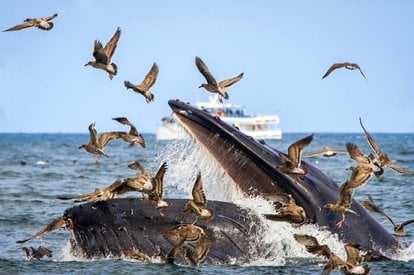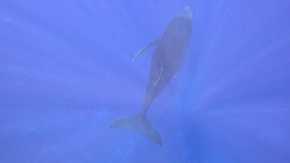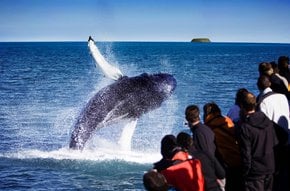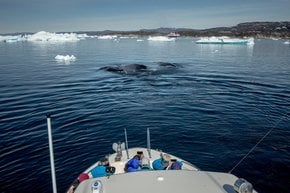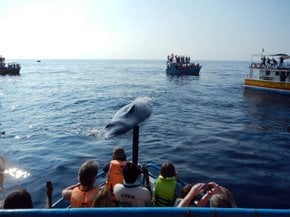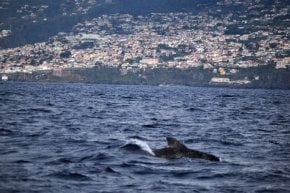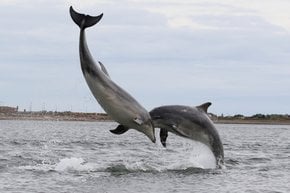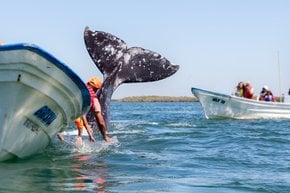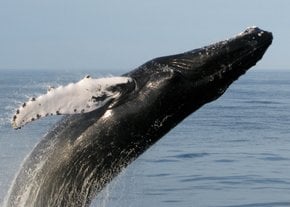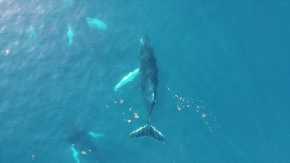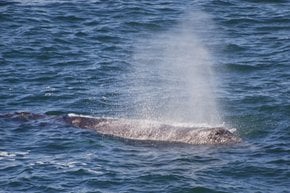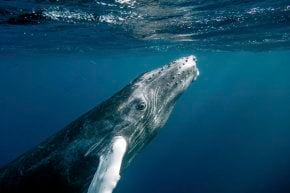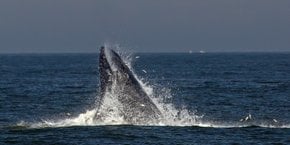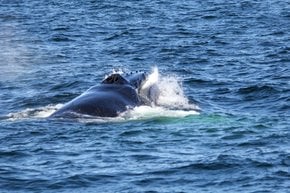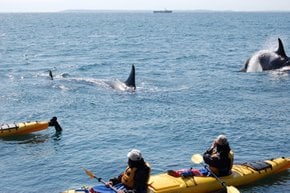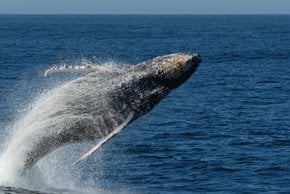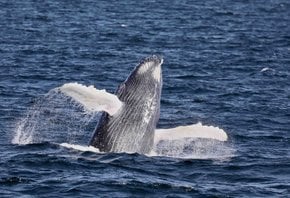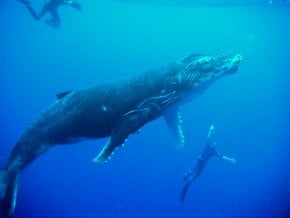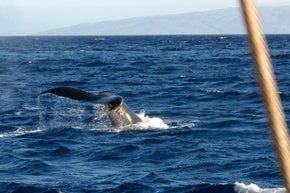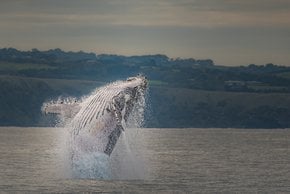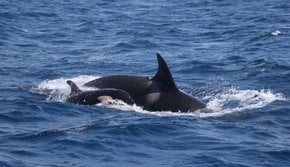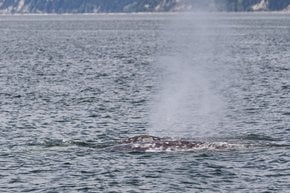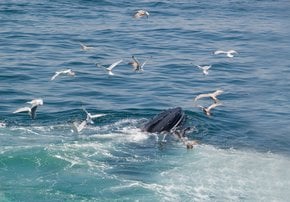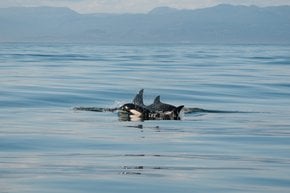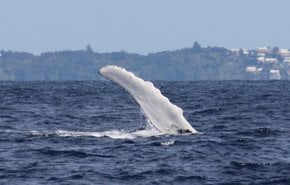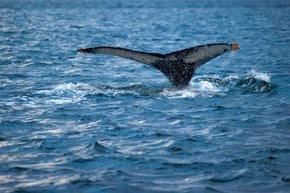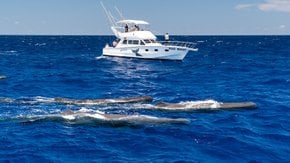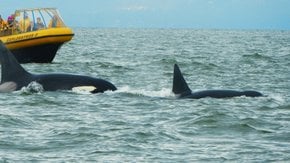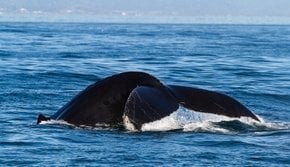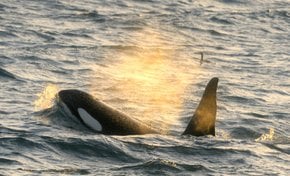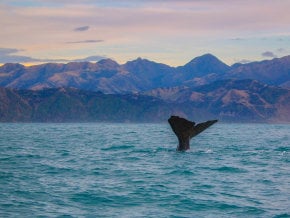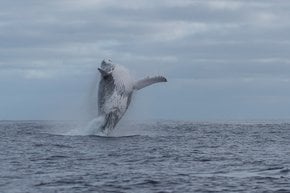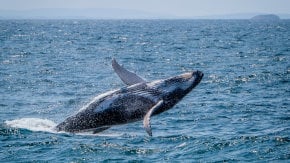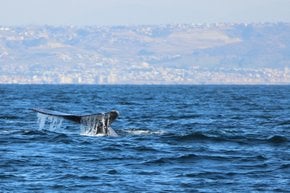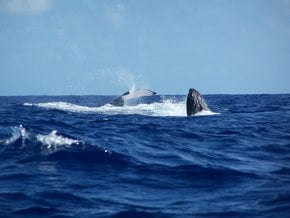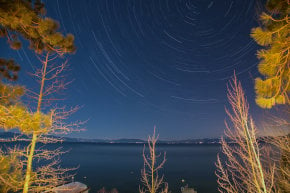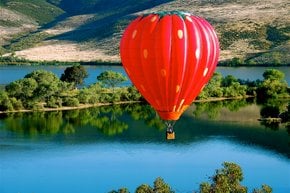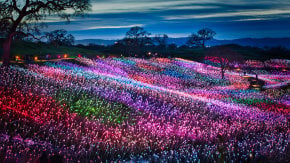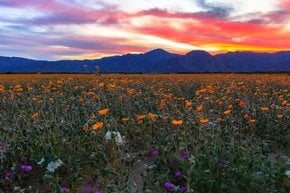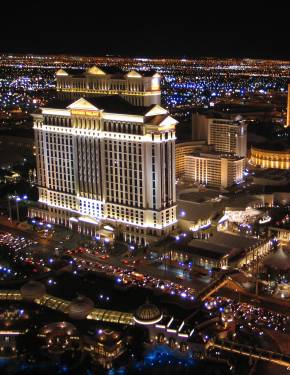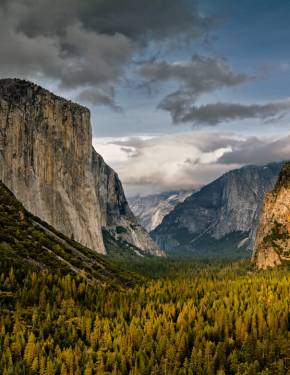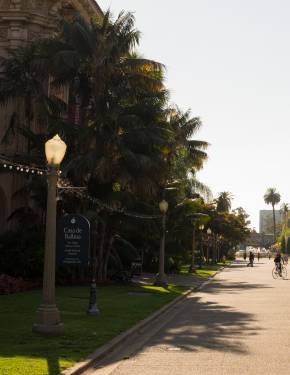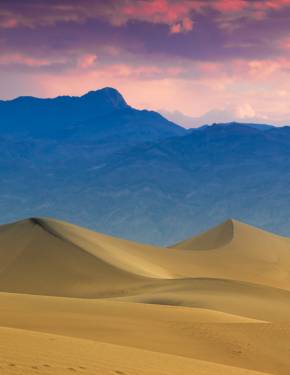Whale Watching in California 2025-2026
From North to South, California observes the giant marine creatures migration every year
Best time: mid-December–mid-April (all year round)
Every fall and winter, about 20,000 gray whales make a long journey from the Bering Sea and Alaska in the north to Baja California in the south. California's coast is a great place to observe this massive migration. The whales get so close to the shore that no boat ride is required to observe them. Migrating gray whales, dolphins, and killer whales can be seen from mid-December through mid-April. There are also opportunities to see blue whales, humpbacks, and other whale species outside the migration season.
Whale Watching on the Mendocino Coast
Every March, Fort Bragg holds a Whale Festival to mark large pods of gray whales passing down the coast. New-born gray whale calves can be seen passing by with their mothers on their way to the rich, cold waters further north. This biannual migration is a staggering feat for any animal. The journey from the Bering Sea of Alaska to calving waters in the Sea of Cortez of Mexico's Baja Peninsula is about 10,000 mi (16,000 km) in length, making this trip the longest migration of any mammal. They pass the coast of Northern California from December to February and head back north from March to May.
Mendocino Coast is a premier whale-watching spot in California, offering many opportunities to observe these giant mammals every morning during migration season. There are plenty of whale-watching trails in Mendocino Headlands State Park and around Point Arena Lighthouse. The Mendocino coast stretches over 90 mi (145 km) and offers picture-perfect viewing locations that offer vantage points above sea level.
Fort Bragg whale-watching tours
Whale-watching tours are available out of Noyo Harbor in Fort Bragg in winter and spring. All Aboard Adventures offers 2-hour whale-watching tours from December 26 through April 30. The cost is $60 per person. Their charter boat, Sea Hawk, is Coast Guard Certified for 30 passengers. Whale sightings are 95% guaranteed.
Anchor Charter Boats is another operator, offering tours from December to May. Their charter boat Kraken, with a spacious outdoor deck and a climate-controlled cabin, carries up to 49 passengers. Telstar Charters also offer 2-hour excursions twice a day during the gray whale migration. Their boat Telstar is Coast Guard certified and is completely equipped with electronics and safety equipment.
Whale Watching on California's Central Coast
San Francisco witnesses hundreds of gray whales passing along the shore from January through April. Point Reyes in Marin County is the prime location to spot them. Humpback whale-watching season lasts from November through March. Tours to the Farallon Islands are especially popular. Orcas, humpbacks, blue, and sperm whales are especially abundant there.
San Francisco whale-watching tours
The San Francisco Bay area offers many choices for whale-watching boat tours. Golden Gate Whale Watch is fffering 2.5 hour tours starting at $120 per person. You are likely to see not only whales but, harbor seals, dolphins, porpoises, sea bird colonies, and incredible views of the Golden Gate Bridge as well. Boats depart from Pier 39, just off The Embarcadero.
Monterey Bay whale-watching tours
Monterey Bay enjoys two whale-watching seasons: mid-December to mid-April for gray whales, dolphins, and killer whales, and mid-April through mid-December for humpback, blue whales, and killer whales. Visitors can observe them from the shore in Monterey Submarine Canyon and Santa Cruz, which features whales off coast at any time of the year. If you prefer a boat cruise, Monterey Bay Whale Watch offers 4-hour morning trips and 3-hour afternoon trips year-round. You can see gray whales, humpback whales, blue whales, dolphins, porpoises, killer whales, sea otters, seals, sea lions, and much more. Tickets start at $76.32.
Whale watching in Southern California
Channel Islands National Park offers premier whale and dolphin watching in the Santa Barbara Channel. Twenty-nine species of sea mammals have been spotted here by the Channel Islands National Marine Sanctuary, including gray, blue, humpback whales, common, bottlenose or Risso’s dolphins, and sea lions. Island Packers offers 3-hour tours year-round for $45.
Los Angeles and Long Beach whale-watching tours
Los Angeles and Long Beach enjoy different types of whales passing along during different seasons. Gray whales can be spotted during winter and spring migration seasons. November–March is a good time to spot humpback and minke whales, dolphins, and sea lions. Harbor Breeze Cruises depart from Long Beach harbor at noon and at 3 pm. Tickets start at $35.
Newport Harbor and Dana Point cruises
Orange County offers cruises out of Newport Harbor and Dana Point, which is home to large pods of whales, dolphins, and sea lions. Dana Wharf Sportfishing & Whale Watching offers 2-hour tours starting at $55. Newport Landing Whale Watching offers tours three times per day for $30 per person. On Newport Beach’s Balboa Peninsula, Davey’s Locker provides 2.5-hour whale-watching cruises several times per day. Tickets start at $30. You will also see dolphins, sea lions, and pelicans. The underwater Newport Canyon is one of the whales' favorite feeding grounds. The best period is from December through April, though there is plenty to see here all year round.
Whale watching in San Diego
Over 20,000 gray whales pass San Diego from mid-December to mid-March. Cabrillo National Monument on Point Loma Peninsula is the most popular observation post. In January, as many as eight grays can be seen every hour. This month features "Whale Watch Weekend" programs with kids' activities and special educational presentations.
Whale watching tips
Spending the day on a boat scanning the horizon for whales could be one of the most memorable experiences of your or your loved-ones lives. But without some key items to add to your day, your time aboard a cruise could quickly sour. Anticipate your needs, as well as what you might want to have a great time on the water.
What to bring
Some boat tour companies offer food, beverages, and a sheltered viewing location on deck. For those that don't, be prepared with snacks, drinks, and a blanket to protect yourself from the wind. 3 hours on the water is a long time to be uncomfortable for those that are unprepared. On sunny days, don't skimp on the sunblock. Additional items to enhance your experience are binoculars and a camera. As a final note, if you are new to being on a boat and you are not sure if you will have motion sickness, having medication on hand is a good idea.
What to wear
While aboard, be prepared for strong winds, ocean spray, and a lot of sunlight. We recommend wearing closed toed shoes, a full-brim hat, long sleeves and long pants. If you are on a winter cruise, be sure to wear insulated layers—waterproof is best. If the summer heat has you in shorts and a t-shirt, sunscreen will be your best friend.
Practical info
External resources
- All Aboard Adventures Whale Watching (Official website)
- Anchor Charter Boats (Official website)
- San Francisco Whale Watching (Official website)
- Monterey Bay Whale Watch (Official website)
- Island Packers Whale Watching (Official website)
- Dana Warf Sportfishing & Whale Watching (Official website)
- Newport Whales (Official website)
- Information about the Pacific Gray Whale (Official website)
- Gray whale migration map (Official website)

